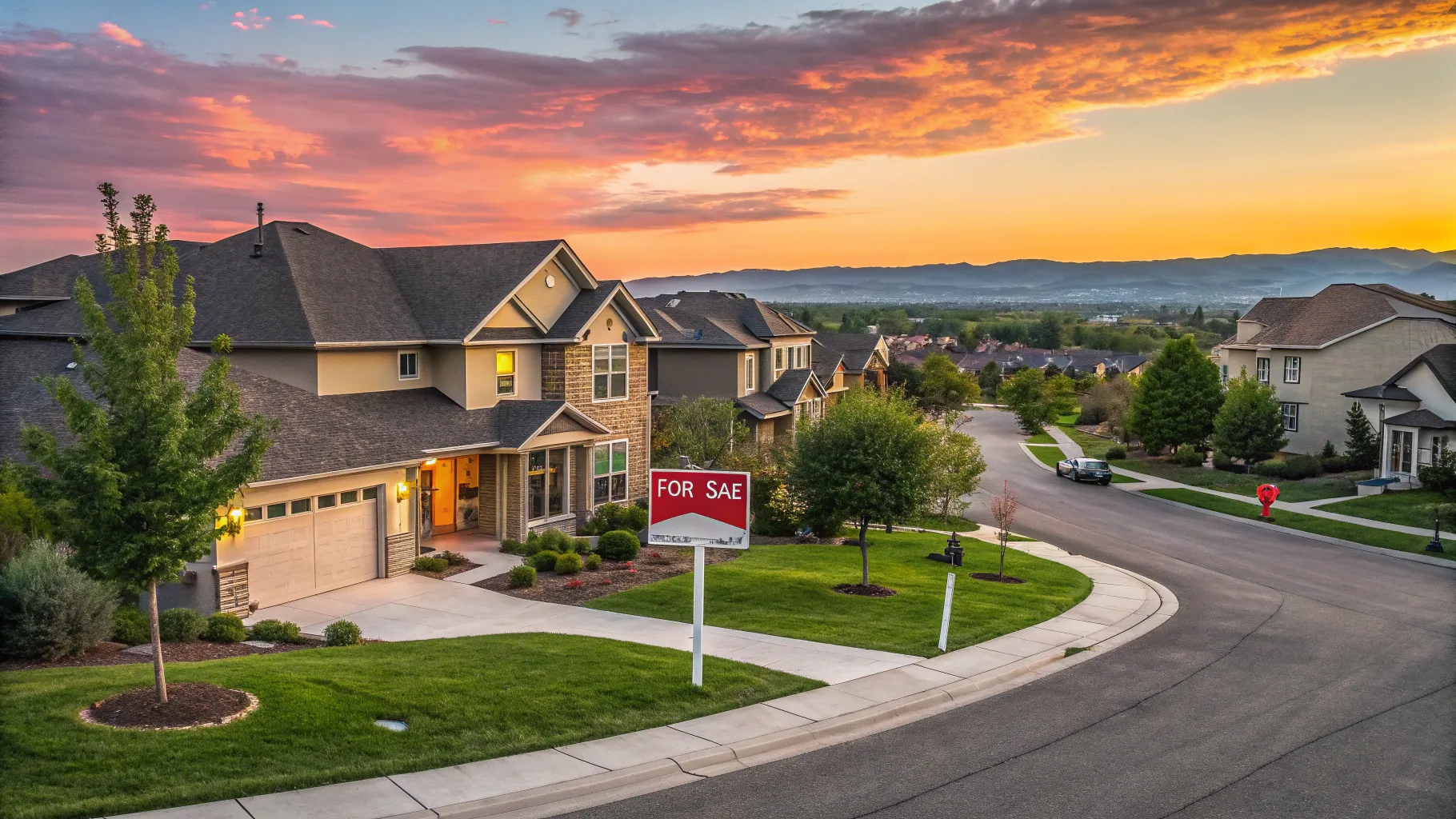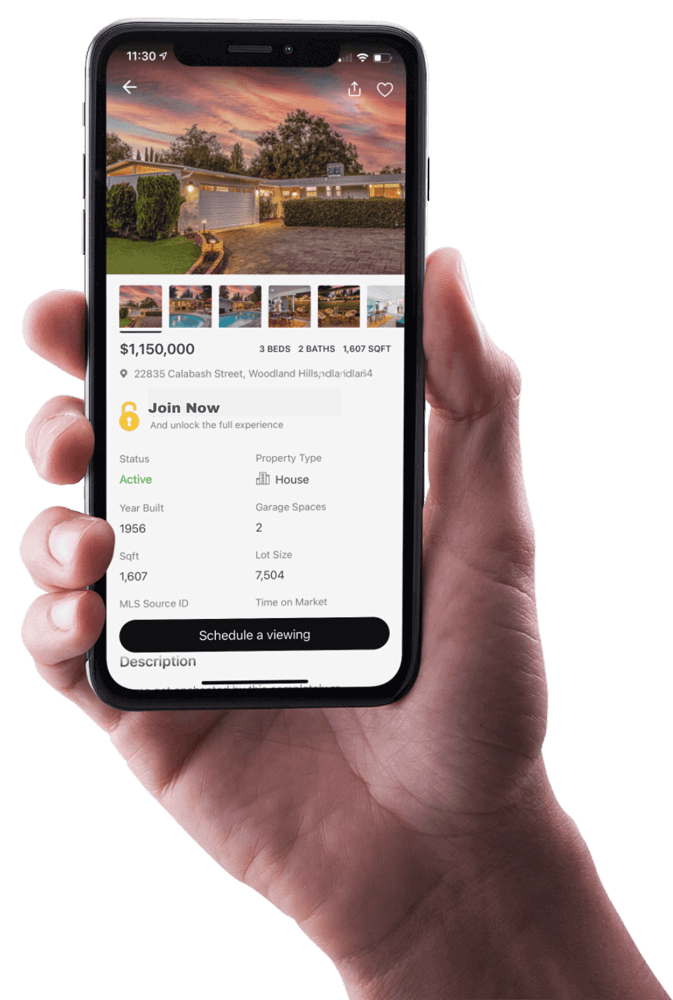2025 Utah Housing Market Forecast: Will Prices Crash or Recover?

As we look ahead to 2025, the Utah housing market is at a crossroads. With insights from leading experts, this analysis breaks down the current trends, challenges, and opportunities for potential buyers and sellers in the Beehive State. Whether you're considering a move or simply want to understand the market better, this forecast will equip you with the knowledge you need.
Introduction to the 2025 Utah Housing Market Forecast
As we step into 2025, the Utah housing market finds itself at a pivotal point, shaped by the echoes of previous years' rapid growth and the current economic climate. The forecast for this year is not only about numbers; it's about understanding the pulse of the market. With insights from esteemed experts like Dr. James Woods, potential buyers and sellers can gain a clearer perspective on what to expect. This analysis delves deep into market conditions, price trends, and the factors influencing home sales, providing essential knowledge for anyone considering entering the Utah real estate landscape.
Insights from Dr. James Woods: Current Market Conditions
Dr. James Woods, a prominent figure in Utah's real estate analysis, describes the current market as experiencing a "hangover" from the explosive growth seen in the aftermath of the pandemic. In 2022, Salt Lake City witnessed a staggering increase in home prices, with an average surge of $188,000, representing a 25% jump. However, as the dust settles, 2024 saw a more tempered market, with home prices rising only 3%. This shift indicates a cooling off period, reflecting the natural ebb and flow of economic cycles. Dr. Woods emphasizes that while the market is stabilizing, it remains competitive, particularly in major urban areas.
Home Price Trends: A Look Back at 2022 and 2024
To understand the trajectory of Utah's housing market, it's essential to look back at the significant price fluctuations over the past two years. The dramatic rise in 2022 was largely driven by a surge in demand as buyers rushed to secure properties amidst a backdrop of low interest rates and limited inventory. However, the landscape changed in 2024, as the market began to stabilize following the rapid price increases. This moderation in price growth is a welcome sign for prospective buyers who may have felt priced out during the peak years. It suggests a potential return to more sustainable growth patterns in the coming years.
What to Expect in 2025: Predictions for Home Sales
Looking forward, Dr. Woods predicts a modest increase in home sales for 2025, projecting a 3% rise overall. This forecast reflects a continued recovery from the frantic pace of previous years, with a notable shift towards condominium sales, which are anticipated to see an 8% increase. This trend indicates a growing demand for more affordable housing options as buyers navigate the realities of rising home prices. With Salt Lake City ranking 28th out of 227 U.S. markets for housing prices, it remains a desirable location for many, but the competition will likely continue to be fierce.
Current Home Prices in Salt Lake City
As of early 2025, the median price for a single-family home in Salt Lake City hovers around $883,019, while condos and townhomes are priced at approximately $425,000. For potential buyers, the financial implications are significant. To purchase a home with a 5% down payment and a 6.63% interest rate, an annual income exceeding $180,000 is necessary. This scenario underscores the challenges many face in accessing homeownership in the city. Understanding these price points is crucial for anyone looking to enter the market.
Understanding Income Requirements for Home Buyers
Income requirements for home buyers in Utah, particularly in urban areas like Salt Lake City, can be daunting. For individuals earning around $100,000 per year, the reality is that affording a home becomes increasingly challenging. In fact, with the current market conditions, a household income of $100,000 would only allow for the purchase of a home valued at approximately $300,000. This discrepancy highlights the necessity for dual incomes or larger down payments to successfully navigate the housing market. Acknowledging these financial requirements is essential for prospective buyers when planning their home purchasing strategy.
Economic Indicators: Employment Growth and Migration Trends
The economic backdrop of the Utah housing market is influenced heavily by employment growth and migration patterns. Dr. Woods notes that employment growth for 2025 is projected at 1.5%, significantly lower than the historical average of 2.8%. This translates to roughly 25,000 new jobs entering the market, which, while positive, is a reduction compared to previous years. Concurrently, migration rates are expected to decline, with a forecast of around 25,000 individuals moving to Utah, down from the highs experienced in recent years. This combination of factors contributes to a more cautious approach in the housing market, as both buyers and sellers adjust to the changing dynamics.
Challenges Facing the Utah Housing Market
The Utah housing market is currently navigating a series of challenges that are shaping its future. One of the primary issues is affordability. With median home prices in Salt Lake City reaching around $610,000, many potential buyers find themselves priced out. This situation is especially difficult for first-time homebuyers, who often struggle to save for a substantial down payment while managing rising living costs. The pressure is on as they seek to enter a market where wages have not kept pace with soaring property values.
Moreover, the inventory of available homes remains a significant concern. Despite a slight increase in new listings, the supply is still insufficient to meet demand. This imbalance is exacerbated by the lingering effects of the pandemic, which caused many homeowners to hold off on selling. The result is a competitive environment where multiple offers are common, further inflating prices and making it harder for buyers to secure a home.
Additionally, the economic landscape is shifting. With employment growth predicted to slow to 1.5% in 2025, the job market may not support the level of demand seen in previous years. This stagnation can lead to decreased consumer confidence, impacting buyers' willingness to invest in real estate. The combination of these factors creates a complex environment that both buyers and sellers must navigate carefully.
Future Home Sales and Market Dynamics
Looking ahead, the dynamics of home sales in Utah are expected to evolve. According to Dr. Woods, home sales are projected to increase modestly by about 3% in 2025. While this growth is encouraging, it indicates a departure from the frenetic pace of the past few years. The anticipated rise in condominium sales by 8% reflects a significant shift towards more affordable housing options, catering to buyers who are adjusting their expectations in light of current market conditions.
As the market stabilizes, it is likely that we will see a diversification of property types being sought after by buyers. The demand for condos and townhomes is on the rise, particularly among younger professionals and first-time buyers who are looking for lower-maintenance options. This shift not only represents changing lifestyles but also highlights the need for developers to adapt to these evolving preferences.
Moreover, as the market continues to navigate affordability challenges, it may also prompt local governments and organizations to explore initiatives that support homeownership. Programs aimed at assisting first-time buyers with down payments or offering incentives for new construction could become increasingly important in fostering a sustainable housing market.
Mortgage Rates: Current Predictions and Their Impact
The outlook for mortgage rates in 2025 remains a critical factor influencing the Utah housing market. Current predictions from major lenders suggest that rates will stabilize in the mid-sixes through the next couple of years. This trend is significant as it directly impacts buyers' purchasing power. Higher mortgage rates can lead to increased monthly payments, which often push potential buyers to reconsider their home-buying timelines.
The current environment presents a paradox for buyers. While rising rates may deter some from entering the market, they could also spur urgency among those who fear further increases. As noted by financial experts, waiting for rates to drop may not be the best strategy, especially if home prices continue to rise. Buyers are encouraged to consider purchasing now, with the possibility of refinancing later if rates decrease.
In Utah's competitive landscape, securing a favorable mortgage rate can make a substantial difference in affordability. Buyers should explore options such as rate buy-downs and work closely with lenders to identify programs that may help mitigate costs. Understanding the nuances of mortgage products available can empower buyers to make informed decisions that align with their financial goals.
Strategies for Home Buyers: Making the Most of Current Conditions
In light of the current market conditions, home buyers in Utah can adopt several strategies to enhance their chances of securing a property. First and foremost, being pre-approved for a mortgage can provide a competitive edge. This step not only clarifies budget constraints but also demonstrates to sellers that the buyer is serious and financially prepared.
Additionally, flexibility in terms of property type and location can open up more opportunities. Buyers should consider exploring neighborhoods beyond their initial preferences. For instance, areas like Saratoga Springs and American Fork may offer more affordable options while still providing desirable amenities and community features.
Furthermore, working with a knowledgeable local real estate agent can significantly benefit buyers. An experienced agent can provide insights into market trends, help identify potential properties before they hit the market, and negotiate effectively on behalf of the buyer. Their expertise can be invaluable in navigating the complexities of the Utah housing market.
The Role of Inflation and Market Predictions
Inflation continues to be a critical factor influencing the Utah housing market. As costs rise across various sectors, including construction and materials, the impact is felt in home prices. Current predictions suggest that inflation rates may stabilize, but the long-term effects could linger, affecting housing affordability and buyer demand.
Moreover, rising inflation can create a sense of urgency among buyers. As expenses increase, potential homeowners may feel compelled to act quickly to avoid paying even higher prices in the future. This behavior can inadvertently fuel competition, leading to bidding wars and further price escalations.
Market predictions indicate that the combination of inflation and economic growth will shape the future landscape of Utah's housing market. Understanding these dynamics is essential for both buyers and sellers as they strategize their next moves. Staying informed about economic indicators can provide valuable context for making decisions in this evolving market.
Frequently Asked Questions about the Utah Housing Market
1. Is now a good time to buy a home in Utah?
While the market presents challenges, many experts suggest that buying now could be advantageous, especially if mortgage rates drop in the future. Buyers should assess their financial situation and readiness before making a decision.
2. How can I improve my chances of getting a mortgage?
Improving your credit score, reducing debt-to-income ratios, and saving for a larger down payment can enhance your chances of securing a favorable mortgage rate.
3. What types of properties are most in demand?
Currently, there is a noticeable shift towards condominiums and townhomes, particularly among first-time buyers seeking more affordable options. Single-family homes remain popular, but buyers are increasingly considering diverse property types.
4. How long does it typically take to close on a home in Utah?
The average closing time can vary, but it generally takes about 30 to 45 days from the time an offer is accepted until the sale is finalized.
For those considering entering the Utah housing market, it is vital to stay informed about current trends and strategies. With careful planning and the right support, navigating the complexities of buying a home can lead to rewarding outcomes.
Related Articles:
- The Real Reasons Why People Are Leaving Utah
- July 2023 Housing Market Update
- Mortgage Rates Plunge Is Now The Time To Refinance Your Mortgage
- Provo Vs St George Choosing The Right Utah City For You
- Unlocking Retirement How Many Rental Properties Do You Really Need
- The Ultimate Guide For First Time Home Buyers In Utah Grants Process And Tips
- Utah Buyers Market
- Parade Of Homes St George 2021
- Navigating Utahs Housing Market Insights And Predictions October 2024
- Scaling Your Rental Portfolio Financing Strategies When You Are Stuck
- DR Horton Utah Real Estate Market Warnings And Price Cuts Ahead
- Utah And Wyoming Which Is More Attractive To Investors









